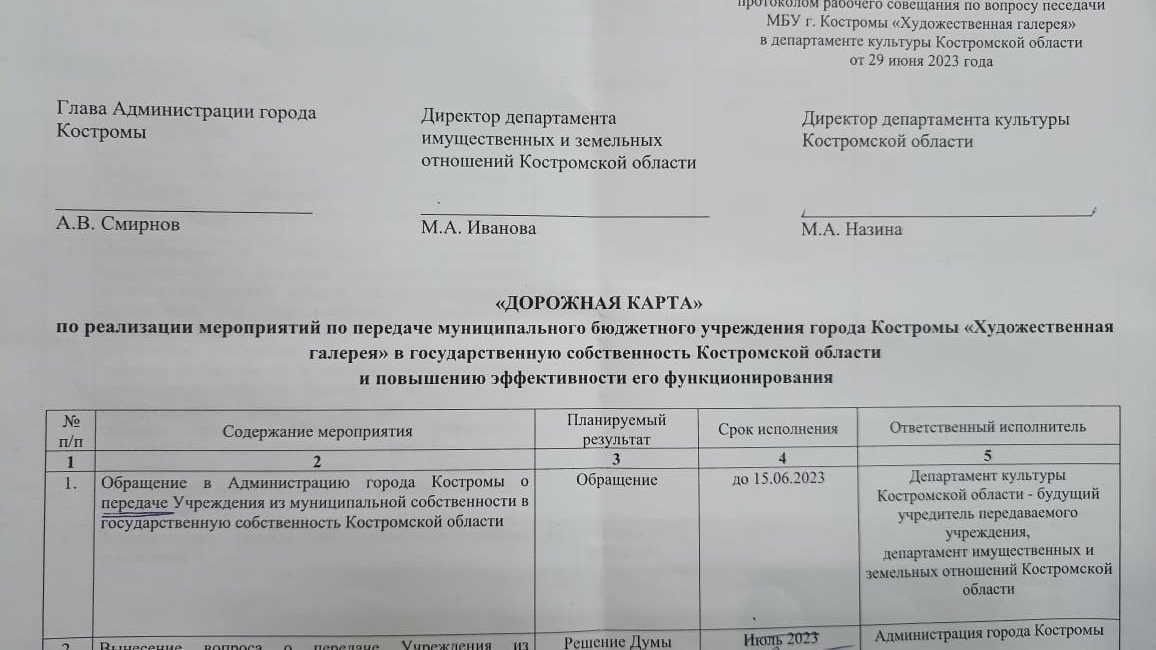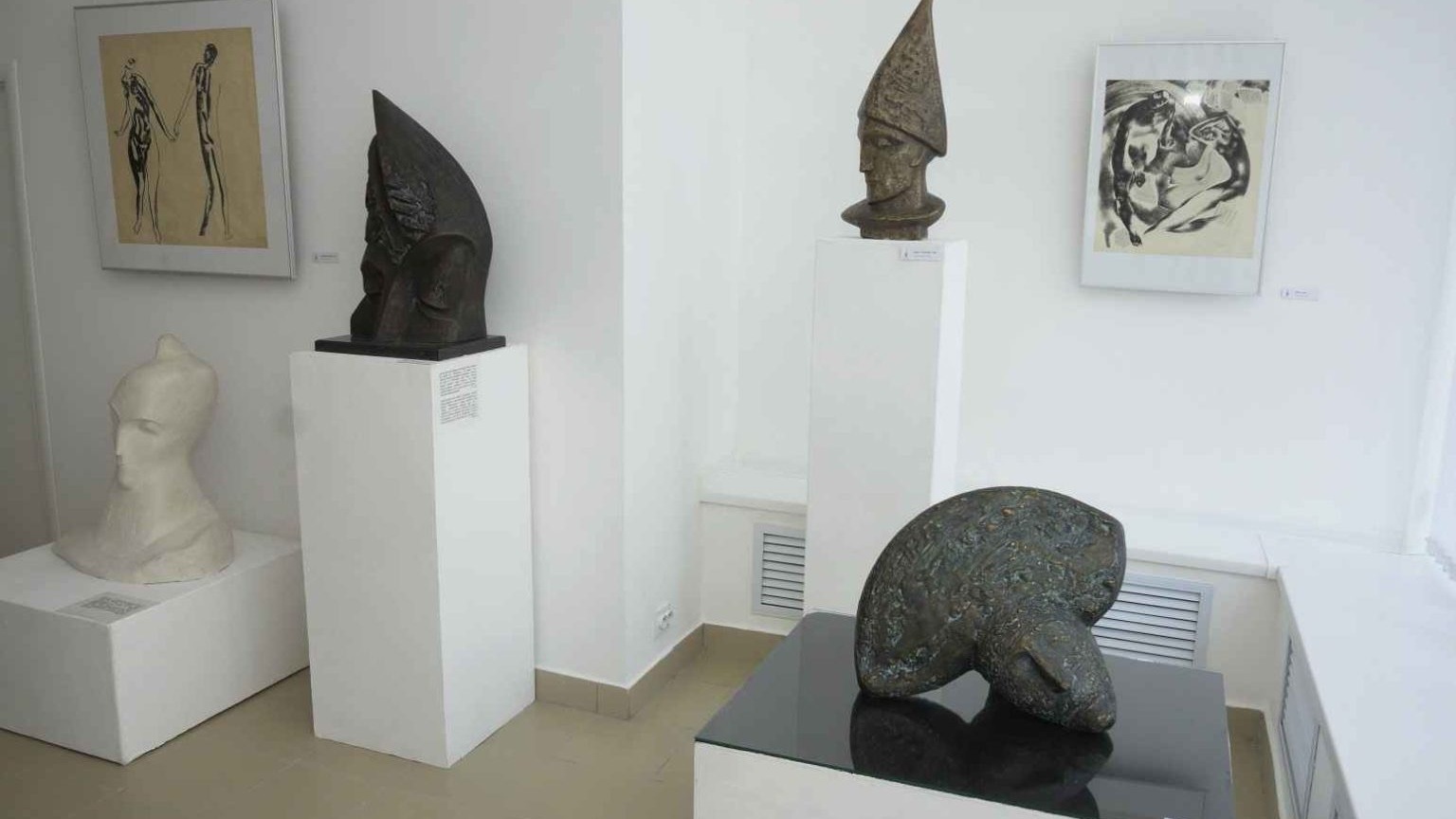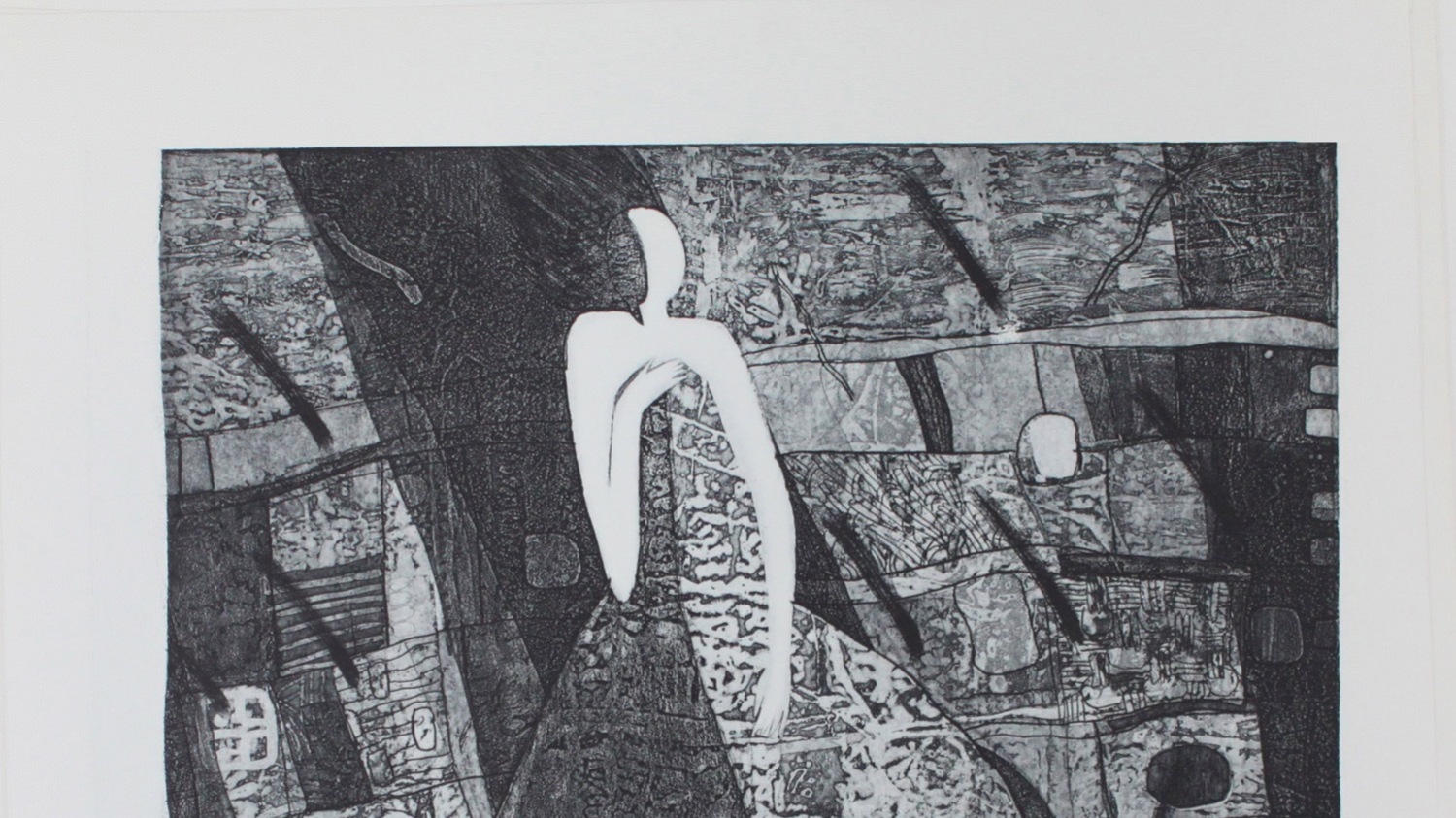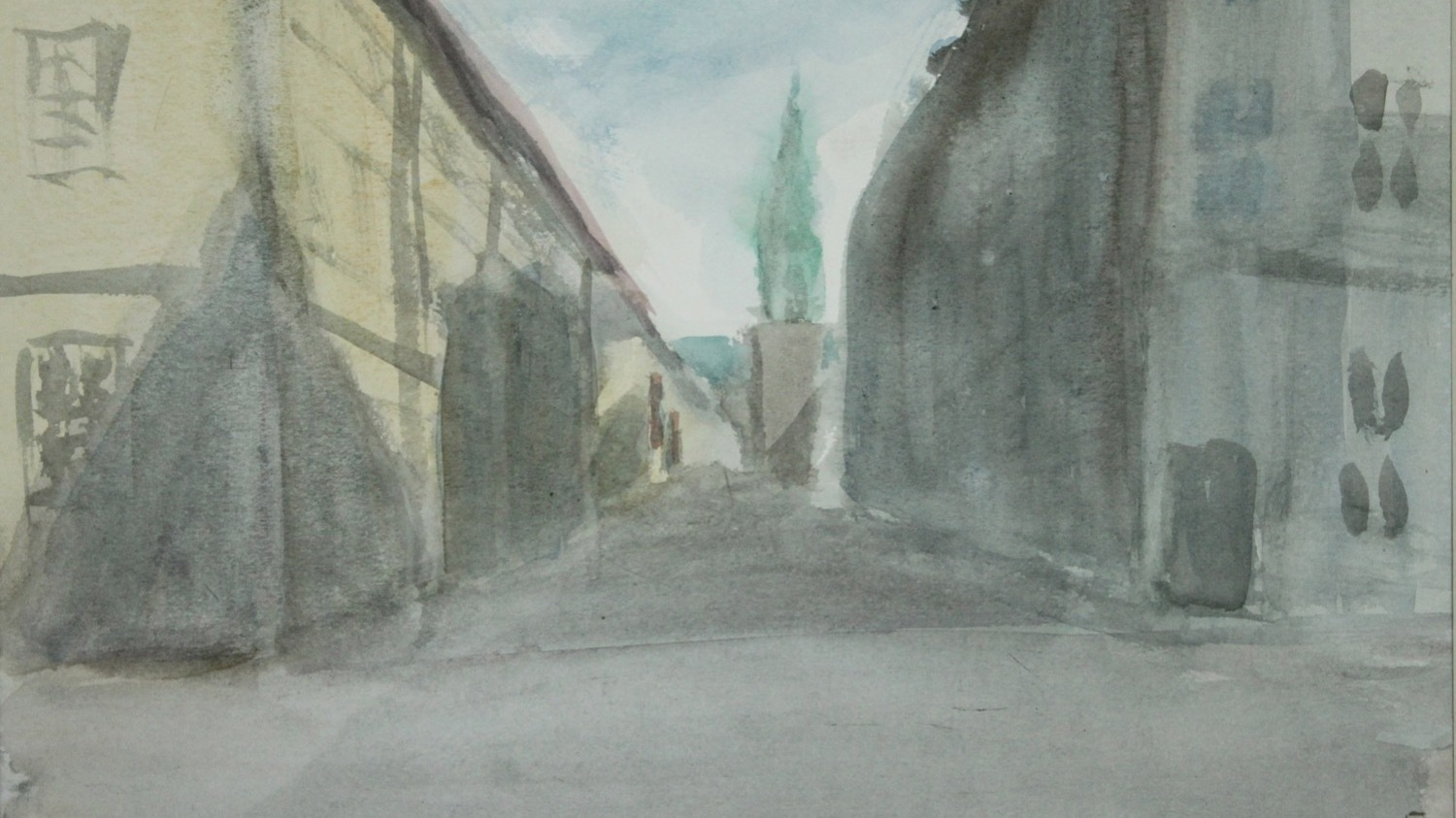Posted 18 июля 2023, 21:00
Published 18 июля 2023, 21:00
Modified 19 июля 2023, 08:38
Updated 19 июля 2023, 08:38

Formalism, zoo and trolleybuses: why destroy the gallery in Kostroma
Elena Petrova, Anna Skudaeva, Natalia Seibil
Wrong address
The fact that the art gallery, which its director Vera Pryamikova has been creating in Kostroma for three decades, should change owners, she found out quite by accident. On June 7, a copy of the letter was sent to her by e-mail, which was addressed to the head of the Committee on Education, Culture, Sports and Youth Work. From it she learned that the administration of the city of Kostroma transfers the property complex of the art gallery from the municipal to the state property of the Kostroma region. Vera Pavlovna knew nothing about these plans. For her it was like a bolt from the blue:
— I was sent this letter by mistake. And then they called the committee to the head and said that such an issue was on the agenda and would be heard at a meeting of the city Duma. I asked a lot of questions. Who is the initiator, what is the reason for the transfer, what are the claims to the work of the gallery, for what purpose is municipal property transferred to the region? I didn't get a clear answer to any of the questions. On June 29, I was invited to a meeting at the Department of Culture of the Kostroma region. The issue of transferring the gallery's property was discussed, details were discussed. There were representatives of the accounting department, lawyers. That was all they talked about.
In short, everything looked like a done deal — for everyone present, except the gallery director.
Why is the municipal gallery a unique phenomenon for the Russian province
Vera Pavlovna Pryamikova came to work in the municipal gallery when there was nothing there but dirty walls, says Irina Edoshina, Doctor of Cultural Studies, professor of the Department of History of Kostroma State University.
— For 27 years they have created a lot: a collection of modern paintings has been collected, exhibitions of artists from Kostroma and other cities are regularly held. The uniqueness of the collected collection is that it reflects the modern artistic process. These are mainly works by artists of the second half of the 20th and early 21st century. Of course, there are such galleries in Moscow, but there are no such galleries in the nearest cities, for example, Yaroslavl, a much larger city.
For three decades, Vera Pavlovna's team has managed to create not just an exhibition space, but a cultural center beloved by the citizens, of which they are proud. Artists and patrons gave gifts to the gallery. So a collection of 3,000 works was created. The regional art museum, which has branches in the Kostroma region, does not have a catalog, and the municipal gallery has published a two-volume catalog of its collection. Nikolay Sorokin, Candidate of Historical Sciences, independent deputy of the Duma of the city of Kostroma, chairman of the Kostroma regional branch of the VOOPIK does not get tired of admiring the activities of the team of ascetics:
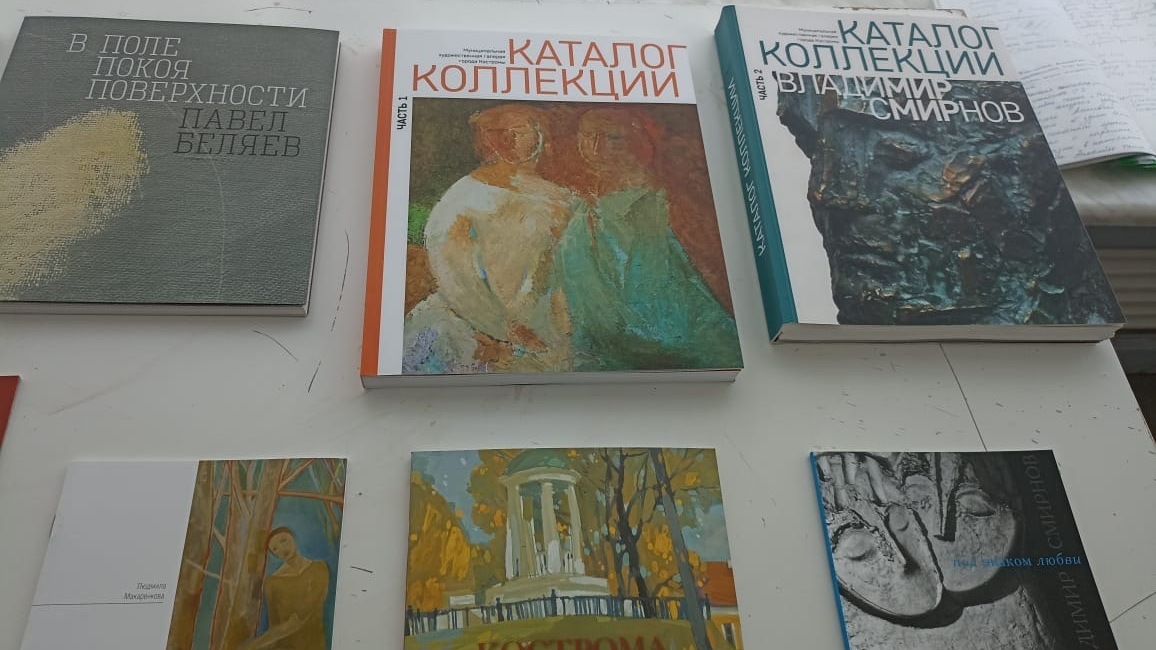

— This is actually a full-fledged museum, which, in addition to exhibitions, has its own funds, conducts scientific and publishing activities. They publish exhibition catalogues and even their own newspaper. The gallery regularly hosts educational events, lectures, and various workshops for children. Exhibitions are exchanged. Recently, the gallery hosted an exhibition from the collection of the museum in Abramtsevo, part of the collection of the art gallery is now on display in one of the most prestigious exhibition halls in Moscow — HPP-2.
Vera Pavlovna is proud of her gallery. Her collection contains the unique legacy of the sculptor, artist and poet Vladimir Smirnov, which is highly appreciated by specialists of the Tretyakov Gallery and the Russian Museum. The museum keeps 100 plaster sculptures of Smirnov. Gypsum is an extremely fragile material, so Vera Pavlovna collected money from benefactors, what they earned themselves, received funding from the city budget. They managed to cast 16 works of Smirnov in bronze.
— The collection contains many paintings by both Kostroma artists and Russian folk artists from other cities. There are canvases of such pillars of Russian art as Andronov, Egorshina, Andrey Vasnetsov, Klara Golitsyna — names that arouse respect among all connoisseurs of modern painting, — says the director.
The gallery's collection is very different from what people who love art usually find in provincial museums. No native-poskonnye motifs «a la rus» with samovars and birches. Instead, a diverse and very modern palette of works from the mid—20th century to the present day. Professor Edoshina understands well why the Kostroma Gallery stands out so much from the general background:
— Of course, since we are talking about modern works, they can be very sharp, they may not be close to every visitor. The provincial space is not very organic for such a gallery, so it has a narrow circle of fans, «terribly far from the people.» But this does not mean that such a gallery, such art should not exist. Employees provide their halls to Kostroma artists, sometimes alien to the aesthetics of the gallery. In order not to create conflict situations, Vera Pavlovna opens her halls to these masters, includes their exhibitions in the work plan.
Why does the region need another museum?
After the memorable letter, Vera Pryamikina was called to a meeting at the regional Department of Culture. The meeting was held in order to discuss when the gallery should be transferred. Vera Pavlovna came there with her deputy:
— No one has even addressed us once. Not a single question. They signed a roadmap for how this will all happen. And they were going to close the meeting. But I got up and said I had questions. There was no answer to any question, but assurances followed that everything would be better. For example, there will be its own accounting department. I said that in fact all these actions are the destruction of the museum, which has been created for 27 years. The only city museum.
For example, the gallery's collection is registered in the museum fund and the state catalog of the Russian Federation. When Pryamikina told about it, there was a pause in the hall. None of those present not only knew about it, but did not even know what to do with it.
— I explained that in order to transfer the collection, it is necessary to inform the Ministry of Culture of the Russian Federation. Museum collections registered in the museum fund are protected by the law on the Museum Fund of Russia. In all documents, in the roadmap, the word «collection» does not appear anywhere. It's like she's not there.
No one openly talks about why the region wants to take over the municipal gallery. To give it to the Kostroma branch of the Union of Artists? But they have their own building and their own exhibition hall. «There is a union of artists of Russia, there is a creative union of artists, there are other associations. There are many different creative organizations. Why should we give municipal property to one creative organization? It is not clear,» the city deputy Nikolay Sorokin is perplexed.
What the administration is currently discussing is being done behind the scenes and without the participation of the public and deputies.
Marina Nazina, Director of the Department of Culture of the Kostroma region, after several clarifying questions from NI, said that everything is being done to improve:
— The gallery has been in existence for 27 years, exhibitions are held not only by Kostroma artists, halls are provided to everyone. Why was the decision made behind the scenes? Residents are worried about the collection.
— No collections will be affected during the transfer. The issue is being resolved with the administration of the city of Kostroma. Contact the administration of the city of Kostroma. Everything is being done to improve, to strengthen this institution. Creation of a separate legal entity of regional significance.
Leonora Ametova, acting head of the Committee on Education, Culture, Sports and Youth Work of the Kostroma City Administration, could not say anything intelligible «NEITHER» either:
— Is this the decision of the head of the city?
— You ask an ordinary employee of the Department of Culture. An ordinary employee! I'm a consultant. I don't do gallery work. My establishments are a zoo and a chamber theater.
— Who does the gallery?
— An ordinary employee like me, who does not make any decisions. Write a request. Get a response in due time.
The editorial office, of course, did not receive any response.
Formalism and Florensky
The municipal gallery was created with the support of the previous mayor of Kostroma, Korobov, who understood and appreciated art, including modern art. He helped the gallery as much as he could. The current leadership of the city and the region is not interested in preserving the gallery. Irina Edoshina is a member of the Council for Culture under the Governor. But even there this question about the fate of the gallery was not discussed. The main version that goes around in the city among art lovers is that a local artist, who is also friends with the mayor, laid eyes on the room:
— If you live in a small city, a small space, you understand that there are things that no one talks about, but everyone understands why they happen. I am sure if you ask the artist Rybakova, she will pretend that she knows nothing, does not openly admit anything. And then he will put his son as director… Rybakova's daughter—in-law is my former graduate student, defended my PhD thesis. She speaks foreign languages. Before the war, he and Rybakova lived in America for six months and sold her works there. And now you won't go abroad. Somewhere it is necessary to hang paintings, sell them. Why not in your gallery?
Why is the fate of the gallery being decided secretly? Why was there no public discussion? Why, finally, does the city refuse a multimillion-dollar property? With all the love for native nature and shutters in any other provincial town in Russia simply does not have such valuable assets. And here, with a generous hand, everything is given to the region.
Irina Edoshina says:
— Last year, the mayor opened a memorial plaque dedicated to Florensky in Kostroma. I don't understand how you can open the board with one hand to Florensky, who was killed by the authorities, and with the other hand do the same thing — kill what you didn't create, destroy artistic value. How can this be done. By the way, Florensky, in his arguments about realism, wrote: if everything is like in life, it's an illusion, it's not true. Always a live sheet will be better than a drawn one. Art should not create illusions, but convey a worldview, a worldview. That's the art.


What does trolleybuses have to do with it
Nikolay Sorokin is a member of the Commission on social issues and local self-government of the Kostroma City Council. These are the very commissions that should consider this issue. There was no consideration in the local Duma. Before the eyes of the deputies, a similar thing happened with the famous Kostroma trolleybuses. The municipality transferred trolleybus management to the regional level. As soon as this happened, it was liquidated, and since July 1, trolleybuses in Kostroma do not run. Residents appealed to Bastrykin in the Sled, the deputy said:
— I'm talking about this because I see a clear parallel: there was a trolleybus department, it was transferred to the regional level, there is no trolleybus traffic in Kostroma anymore. I believe that the situation with the municipal gallery can also go this way. It will be transferred to the regional level, and it will end its existence. The gallery is not just walls, furniture and exhibits, a collection with a total value of more than 50 million rubles. It is also a team created by Vera Pryamikova. She has a small but very professional team. It is clear that they will not be left there.
Vera Pavlovna is very worried, and it is possible to understand her — her life's work is collapsing, but not only:
— They say that everything will be as before. But the municipal art gallery will disappear from the map of the city. There will be a completely new education. And what will it do? They don't say. But the earth is full of rumors… I'm very concerned. I am a museum worker with 37 years of experience, an art critic. Who needs our collection besides us? We have now built an exhibition of Kostroma artists from the collection of the gallery, which enjoys crazy success with the audience. Some of our works are exhibited in Moscow, at HPP-2.
Employees are not told anything. They are also «transferred» as a museum complex.
The main accusation against the gallery is that it is not realism and not Russian art, says Irina Edoshina, Doctor of Art History. Governor Sitnikov, who was also addressed by «NI» and who did not find time to answer our questions, hinted in one of his speeches that he prefers «Russian classical art». There were many such amateurs in Soviet and Russian politics. What is one «bulldozer exhibition» worth, which was demolished by order of Brezhnev, because the exhibited works were, in his opinion, not realistic enough. And the works of Zurab Tsereteli, who, according to rumors, patronizes a Kostroma artist with connections and views of the premises of the municipal gallery, are all over Moscow with the support of former mayor Luzhkov. Irina Edoshina warns:
— If the collection is transferred to the regional art museum, then it will disappear there. Recently, the museum was merged with the museum of the Ipatievsky Monastery. They haven't sorted out those collections yet. And several more branches in the region. The collection will be divided and the whole collection will disappear. They don't need these jobs. The main accusation is not realism, it is not Russian art. Corrupting influence and further down the list.
Deputy Sorokin hopes for the governor. After all, he saved the pond in Kostroma, which they wanted to bury. It's a pity that the gallery is not a pond.

